Unleashing AI's Potential in High-Frequency Trading
Introduction
In recent years, the financial industry has witnessed a rapid evolution in how trading is conducted. High-Frequency Trading (HFT) has emerged as a dominant force, utilizing advanced algorithms and lightning-fast execution to capture profits in fractions of a second. At the same time, Artificial Intelligence (AI) has made significant strides in various fields, revolutionizing industries such as healthcare, transportation, and entertainment. Now, the intersection of AI and HFT is unlocking new possibilities and transforming the trading landscape.
Overview of High-Frequency Trading (HFT)
High-Frequency Trading refers to the practice of using sophisticated algorithms and high-speed technology to execute a large number of trades within incredibly short timeframes. HFT firms leverage technology to gain a competitive advantage by exploiting small price discrepancies, market inefficiencies, and fleeting opportunities. These trades are typically executed by powerful computers that can process vast amounts of market data and execute orders in microseconds.
The rise of HFT can be attributed to advancements in technology, such as high-speed networks, colocation services, and low-latency trading platforms. These technologies have enabled HFT firms to access market data and execute trades faster than ever before, giving them a significant edge over traditional traders.
Overview of Artificial Intelligence (AI)
Artificial Intelligence is a branch of computer science that focuses on creating intelligent machines capable of performing tasks that typically require human intelligence. AI systems are designed to analyze vast amounts of data, recognize patterns, make predictions, and learn from experience.
There are several subfields of AI, including machine learning, neural networks, natural language processing, and computer vision. These technologies have revolutionized industries such as healthcare, finance, and transportation, enabling organizations to automate processes, make data-driven decisions, and improve efficiency.
Unlocking the Power of AI in HFT
The integration of AI into HFT has the potential to revolutionize the industry even further. AI-powered algorithms can process vast amounts of market data, identify patterns, and make predictions with unprecedented accuracy and speed. This gives HFT firms a competitive advantage by allowing them to execute trades based on real-time market conditions and make split-second decisions.
Benefits of AI in HFT
- AI algorithms can process vast amounts of market data in real-time, enabling traders to make more informed decisions. By analyzing historical data and identifying patterns, AI algorithms can predict market movements with high accuracy, allowing traders to capitalize on profitable opportunities.
- AI-powered algorithms can adapt and learn from changing market conditions. Traditional trading strategies often rely on fixed rules or models that may become obsolete in rapidly changing markets. AI algorithms, on the other hand, can continuously learn from new data, adapt their strategies, and improve their performance over time.
- AI algorithms can automate the entire trading process, from data analysis to trade execution. This eliminates the need for manual intervention and reduces the risk of human error. By automating trading strategies, AI can also reduce transaction costs and improve efficiency.
Challenges in Implementing AI in HFT
While the potential benefits of AI in HFT are significant, there are several challenges that need to be addressed. Firstly, AI algorithms require vast amounts of high-quality data to train and make accurate predictions. Obtaining and processing this data can be a complex and resource-intensive task.
Secondly, AI algorithms can be highly complex and difficult to understand. This poses challenges from a regulatory perspective, as regulators may struggle to assess the fairness, transparency, and accountability of AI-powered trading systems.
Lastly, AI algorithms are only as good as the data they are trained on. If the training data is biased or incomplete, the AI algorithm may make inaccurate predictions or exhibit unintended behavior. Ensuring the quality and integrity of training data is, therefore, a critical challenge in implementing AI in HFT.
Real-World Examples of AI in HFT
Several financial institutions have already embraced AI in HFT and are reaping the benefits. JPMorgan Chase is one such example. The bank has leveraged AI to enhance its trading performance and gain a competitive edge. JPMorgan Chase has developed AI-powered algorithms that analyze market data, identify patterns, and make real-time predictions. These algorithms have helped the bank improve its trading strategies and generate substantial profits.
Goldman Sachs is another financial institution that has embraced AI in HFT. The investment bank has developed AI-powered algorithms that automate trading strategies and execute trades with lightning-fast precision. By leveraging AI, Goldman Sachs has been able to automate repetitive tasks, reduce costs, and improve efficiency.
These real-world examples demonstrate the potential of AI in HFT and highlight how it can transform the trading landscape.
Conclusion
AI is rapidly transforming the trading landscape, and its potential in high-frequency trading is immense. By leveraging AI-powered algorithms, HFT firms can analyze vast amounts of market data, make accurate predictions, and execute trades with lightning-fast precision. The benefits of AI in HFT include improved decision-making, adaptability to changing market conditions, and automation of the trading process.
However, there are challenges that need to be addressed, such as obtaining high-quality data, ensuring regulatory compliance, and mitigating biases in training data. Overcoming these challenges will be crucial in harnessing the full potential of AI in HFT.
Looking ahead, the future of AI in HFT looks promising. Advancements in AI technologies, such as deep learning and reinforcement learning, are likely to further enhance the capabilities of AI algorithms in analyzing market data and making predictions. Additionally, regulatory frameworks are expected to evolve to address the unique challenges posed by AI-powered trading systems.
In conclusion, the integration of AI into HFT has the potential to revolutionize the industry and unlock new possibilities. As technology continues to advance, it will be exciting to see how AI shapes the future of high-frequency trading.




